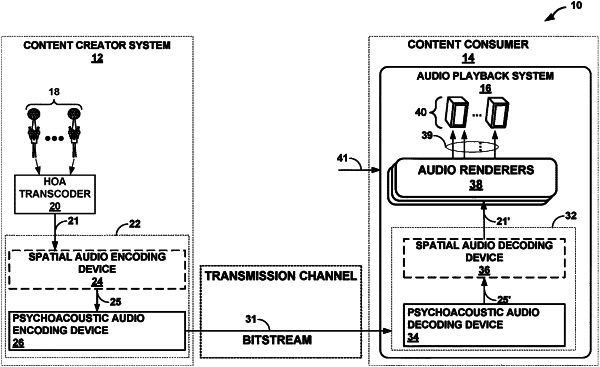| CPC G10L 19/032 (2013.01) [G10L 19/167 (2013.01); G10L 25/51 (2013.01); H04L 65/70 (2022.05); H04L 65/75 (2022.05)] | 22 Claims |

|
1. A device configured to encode ambisonic coefficients, the device comprising:
a memory configured to store the ambisonic coefficients; and
one or more processors configured to:
perform a linear invertible transform with respect to the ambisonic coefficients to obtain a foreground audio signal and a corresponding spatial component, the corresponding spatial component defining spatial characteristics of the foreground audio signal, wherein the foreground signal is defined in the spherical harmonic domain, and the corresponding spatial component defined in the spherical harmonic domain, wherein the linear invertible transform is one of a singular value decomposition (SVD), principal component analysis (PCA) or eigenvalue decomposition;
perform a gain and shape analysis, in an audio encoder, with respect to the foreground audio signal to obtain a gain and a shape representative of the foreground audio signal;
encode the gain and the shape to obtain a coded gain and a coded shape; and
specify, in a bitstream, the coded gain and the coded shape.
|